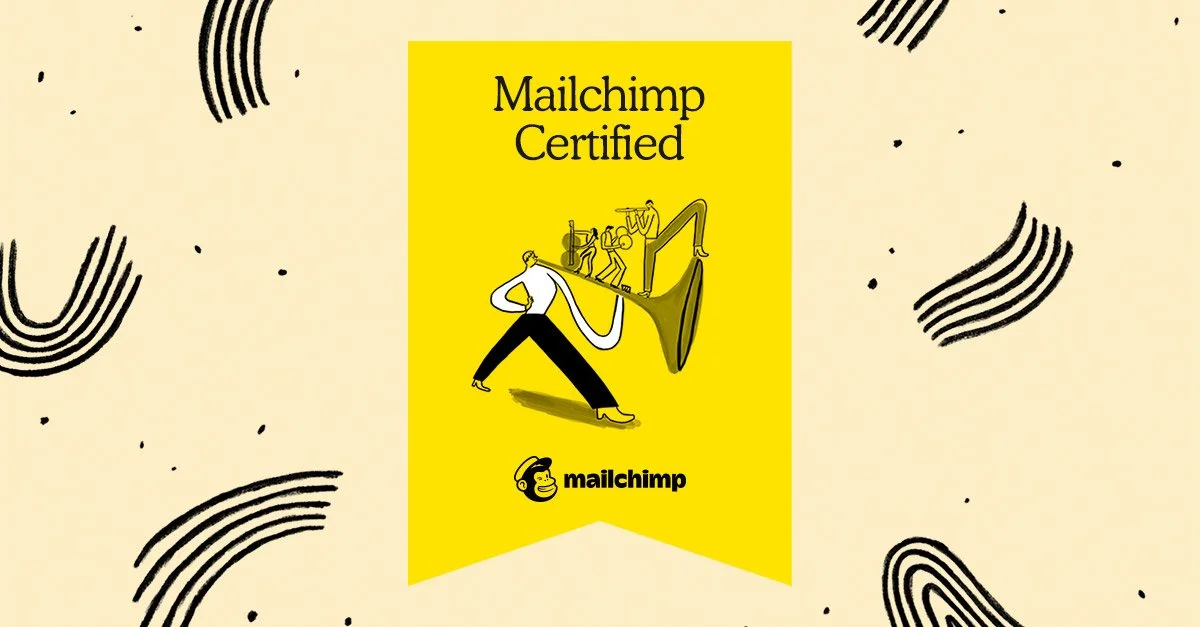The MailChimp Playbook: Efficient Email Marketing Tips from a Certified Expert (2025 Update)
I am a MailChimp Certified Partner and have been trusted by clients to build their email strategies since 2014.
If you feel like your email marketing efforts aren't paying off, you're not alone. The digital landscape is noisy. But for my clients—from Episcopal churches across the South to the Boys & Girls Clubs of the Mississippi Delta—a well-executed email strategy remains one of the most reliable ways to connect with their community.
Having built and managed campaigns exclusively on MailChimp for over a decade, I've seen what works (and what doesn't). Here’s my updated playbook for efficient and effective email marketing in 2025.
1. Build a List You Actually Want to Email
Efficiency starts long before you hit "send." A small, engaged list is infinitely more valuable than a large, disinterested one.
Go Beyond the "Sign Up" Button: Offer a lead magnet—a downloadable guide, a discount, or exclusive content—that is genuinely valuable to your ideal audience. For a Boys & Girls Club, this could be a "Guide to After-School Program Success." For a church, a PDF of upcoming event dates.
Make Signing Up Frictionless with a Footer Form: One of my most effective strategies is embedding the MailChimp signup form in the website footer. On my Squarespace site, I edited the footer once, and it now appears on every single page automatically. This is a classic "set it and forget it" technique that captures visitors who are ready to connect.
Supplement with Other Placements: Also use MailChimp's forms in your blog sidebar and on a dedicated "Join Our Newsletter" page.
Pro Tip: In your MailChimp audience settings, use the "Double Opt-in" feature. It ensures subscribers are genuinely interested and dramatically improves list health and deliverability.
2. Personalize Beyond the First Name
Modern subscribers expect personalization, but it goes deeper than *|FNAME|*.
Leverage Tags and Groups: Don't just have one giant list. Use MailChimp's tagging and grouping features to segment your audience. Create tags for "Volunteers," "Donors," "Parents," or "Interested in Children's Programs."
Send Targeted Campaigns: With your audience segmented, you can send a targeted blast about a volunteer meeting only to the "Volunteers" tag. This relevance skyrockets open rates and cuts down on unsubscribes.
3. Design for the Inbox
Your emails should be clean, scannable, and mobile-first. Over 60% of emails are opened on a phone.
Trust MailChimp's Templates: MailChimp’s built-in, responsive templates are your best friend. They are tested across thousands of devices and clients. Choose a simple, clean layout and stick with it for brand consistency.
The Goal is a Click: Every email should have one primary goal. Whether it's reading a blog post, signing up for an event, or making a donation, your call-to-action (CTA) button should be obvious, compelling, and easy to tap.
4. Embrace Automation
This is where MailChimp truly shines and saves you dozens of manual hours.
Welcome Series: When someone new subscribes, trigger an automated 3-part welcome series. Introduce your organization, deliver the lead magnet they signed up for, and share a popular piece of content.
Re-engagement Campaign: Create a segment for subscribers who haven't opened an email in 90 days. Send them a special automated email with a subject like "We miss you!" to clean your list and boost overall performance.
5. Gather Feedback with Surveys
One of my favorite—and most underutilized—MailChimp features is the ability to create and send surveys directly through the platform.
Post-Event Feedback: This is a game-changer. After a fundraiser, a volunteer training, or a community event, tag the attendees in your MailChimp audience and send them a short survey. Ask what they enjoyed and what could be improved. This direct feedback is invaluable for proving your impact to stakeholders and planning even better events next time.
Segment Based on Responses: Use the survey responses to further segment your audience. For example, those who said they're "Very Interested" in volunteering can be tagged for a specific volunteer recruitment campaign.
6. Measure What Matters
Open rates are interesting, but they don't always tell the full story.
Track Clicks & Conversions: The click-through rate (CTR) is a much stronger indicator of engagement. Even better, use MailChimp's link tracking to see if those clicks led to a donation, sign-up, or event registration.
Check for Bounces & Unsubscribes: A high bounce rate means your list hygiene is poor. A sudden spike in unsubscribes after a specific email is valuable feedback. Review these reports every time you send.
Why I Trust & Recommend MailChimp
I don't just use MailChimp; I'm certified in its best practices. For my clients—often mission-driven organizations like churches and non-profits—it provides the perfect balance of power and simplicity. I particularly appreciate that MailChimp still offers a robust free plan, making it accessible for organizations just starting their email journey. As your needs grow, the platform scales with you—the automation and survey features rival more expensive platforms, and its deliverability is top-tier when used correctly. It’s the engine I've relied on to help my clients tell their stories for over ten years.
Ready to build an email strategy that deepens community engagement? As a Greenwood, Mississippi-based designer with a global reach, I can help you set up an efficient, automated MailChimp strategy that grows with your mission.

